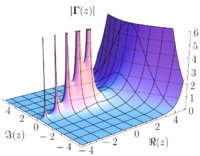| Mathematical analysis → Complex analysis |
| Complex analysis |
|---|
 |
| Complex numbers |
| Complex functions |
| Basic theory |
| Geometric function theory |
| People |
In complex analysis, a complex-valued function of a complex variable :
- is said to be holomorphic at a point if it is differentiable at every point within some open disk centered at , and
- is said to be analytic at if in some open disk centered at it can be expanded as a convergent power series (this implies that the radius of convergence is positive).
One of the most important theorems of complex analysis is that holomorphic functions are analytic and vice versa. Among the corollaries of this theorem are
- the identity theorem that two holomorphic functions that agree at every point of an infinite set with an accumulation point inside the intersection of their domains also agree everywhere in every connected open subset of their domains that contains the set , and
- the fact that, since power series are infinitely differentiable, so are holomorphic functions (this is in contrast to the case of real differentiable functions), and
- the fact that the radius of convergence is always the distance from the center to the nearest non-removable singularity; if there are no singularities (i.e., if is an entire function), then the radius of convergence is infinite. Strictly speaking, this is not a corollary of the theorem but rather a by-product of the proof.
- no bump function on the complex plane can be entire. In particular, on any connected open subset of the complex plane, there can be no bump function defined on that set which is holomorphic on the set. This has important ramifications for the study of complex manifolds, as it precludes the use of partitions of unity. In contrast the partition of unity is a tool which can be used on any real manifold.




